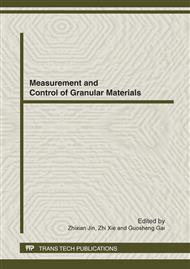p.92
p.96
p.101
p.106
p.110
p.114
p.118
p.122
p.127
Comparison and Analysis of Different Standards for Determining Dust Resistivity
Abstract:
Accurate measurement of dust resistivity is important practically for electrostatic prevention and design of electrostatic precipitators. The test result of dust resistivity depends on the standard used. There are three standards widely used for determination of dust resistivity: IEC 1241-2-2, BS 5958-1 and ASME PTC28 4.05. Experimental devices are designed and constructed according to these standards. The schematics of test principles and circuits of different standards are introduced. Experimental results show that dust resistivity values determined by different standards are quite different, and in some cases the difference is even in 1~2 orders of magnitude. The test results according to IEC standard are the highest, while the results using ASME standard are the lowest. The methods given by IEC standard and BS standard are normally used in electrostatic prevention, while method given by ASME standard is applied to the design of electrostatic precipitators. It is necessary to choose the appropriate standard according to the application of dust resistivity.
Info:
Periodical:
Pages:
110-113
Citation:
Online since:
April 2012
Authors:
Price:
Сopyright:
© 2012 Trans Tech Publications Ltd. All Rights Reserved
Share:
Citation:


